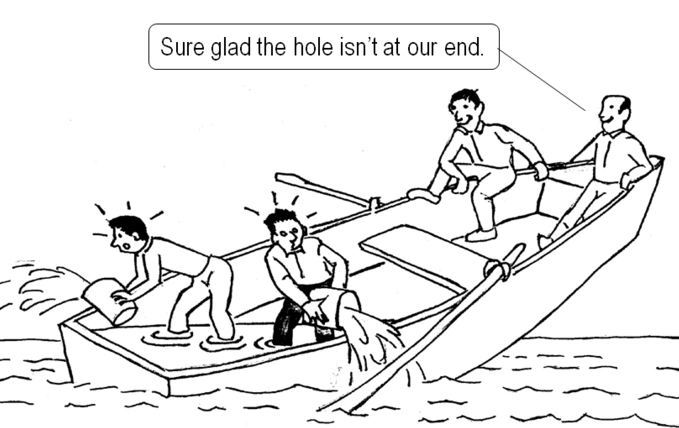
- If you want to improve your football team, you might change the quarterback
- If you want to play basketball instead of football, you’d need to modify the playing field, get a new ball, and follow a slightly different set of rules
- If you want to play poker instead of basketball, you need to get rid of the playing field altogether and adopt a very different set of rules.
The actions you choose to take depend on your goal. Systems thinking is a set of tools that can help to make sense of complex systems and to develop strategies for making change. Systems thinking can help you understand the situation you are working with, figure out what your goals are in relation to it, and determine what actions you need to take in order to accomplish them.
One important feature to understand is that the inhabitants of a system are often unaware of the existence of other types of systems or that they are even in a system That is, people playing football will process information through their perspective as football players, not as basketball players. While on the field, it may be extremely difficult to get the football players to even realize that there is such a thing as basketball, let alone convince them to start playing it. Many teaching stories allude to this phenomenon:
“There are these two young fish swimming along and they happen to meet an older fish swimming the other way, who nods at them and says “Morning, boys. How’s the water?” And the two young fish swim on for a bit, and then eventually one of them looks over at the other and goes “What the hell is water?”
David Foster Wallace, commencement speech at Kenyon College on May 21, 2005.
One goal we hold for your college experience is for you to become aware of the water you are swimming in and also to consider other types of “water” (such as air!) that others might be swimming in. Being able to step out of yourself and “breathe the world through different lungs” is fundamental to understanding your own values and motivations. Systems Thinking is a tool that can be used to systematically consider problems from a variety of perspectives and to discover solutions that have lasting effect. As such, systems thinking is at the foundation of all design frameworks and is a required course in the Art program’s design track (ARTST 107, offered winter term) Explore the links below for more information on systems thinking.
